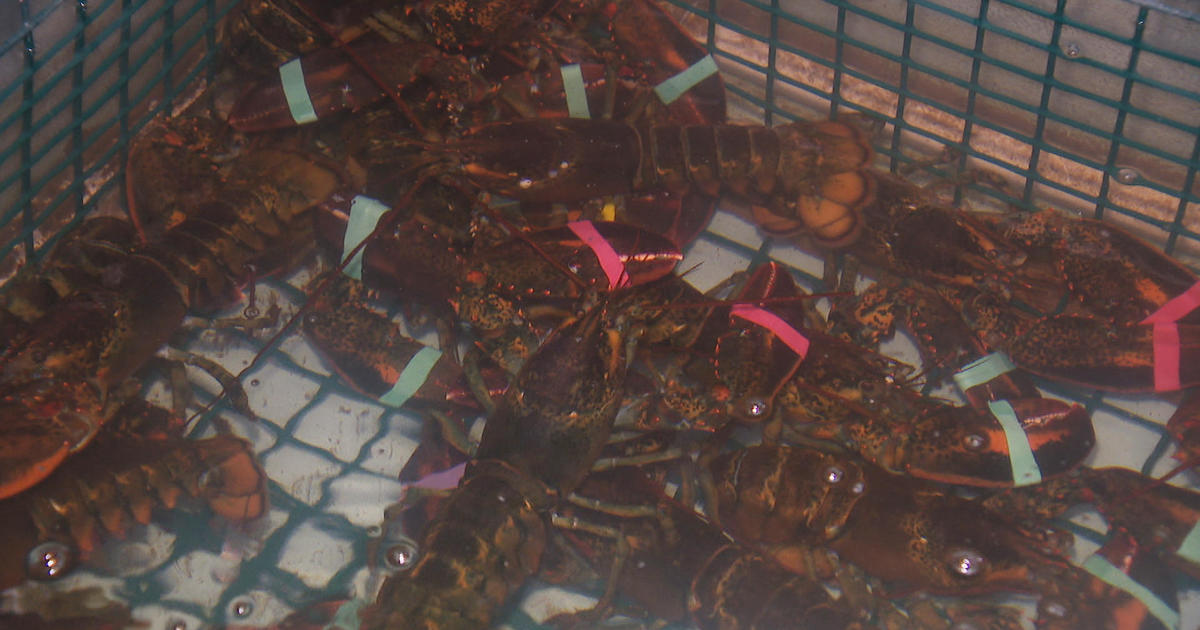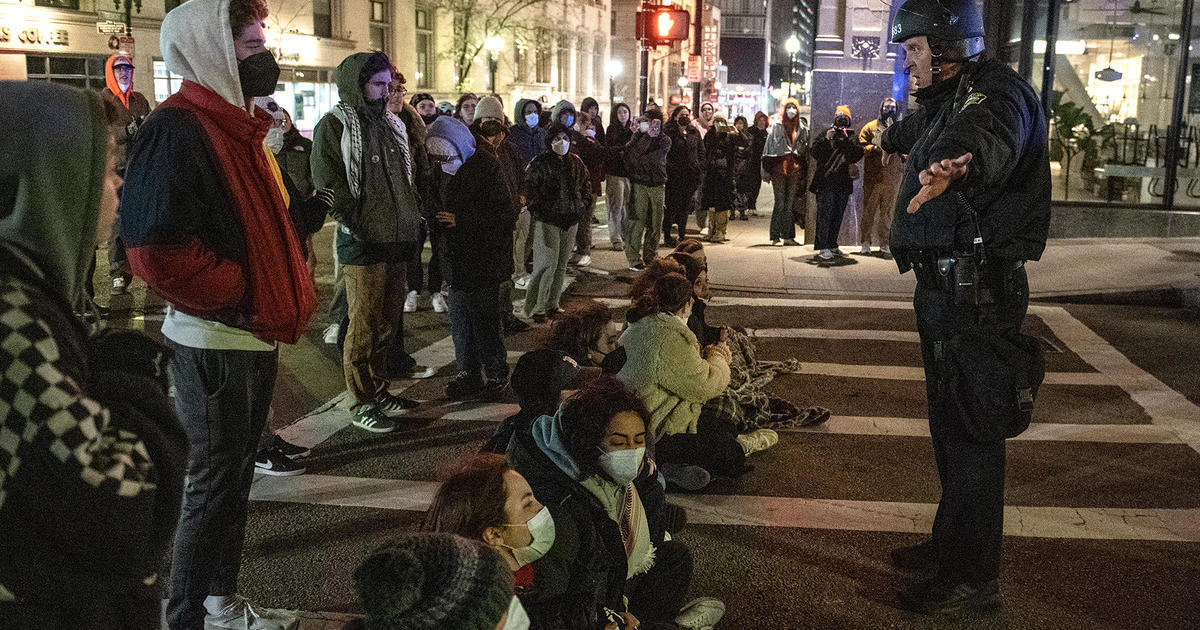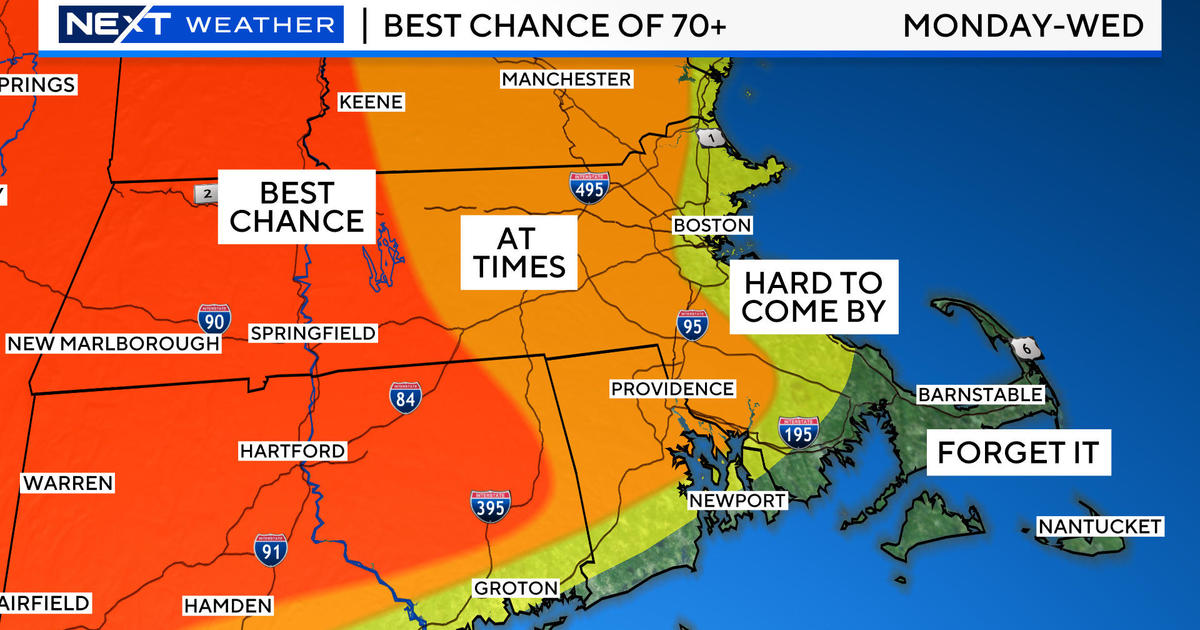'Hurricane Hunters' To Fly Through Powerful Nor'easter Impacting New England
BOSTON (CBS) -- While Massachusetts residents will weather Saturday's nor'easter from ground level, the Air Force's 53rd Weather Reconnaissance Squadron will have a different perspective.
The squadron is widely known as "Hurricane Hunters,' but in this case, the team will be flying into the developing storm.
We had a chance to chat with Lieutenant Colonel Mark Withee about what his team hopes to accomplish during the upcoming storm.
Zack Green: Obviously, you're a part of the 'Hurricane Hunters,' but we are in the dead of winter here in New England. You're going to flying through a storm that's going to be bringing us blizzard conditions. You don't typically think 'Hurricane Hunters' during winter time. Do you guys generally do missions like this outside the hurricane season?
Lt. Col. Mark Withee: "Yeah, absolutely. We get the name 'Hurricane Hunters', and it's probably the highest profile part of our job. But the 53rd Weather Reconnaissance Squadron does perform flights in all sorts of weather conditions to form reconnaissance of what is going on. So yes, this is a big part of our mission. We are flying off the east coast today. Started that yesterday, and we'll be going into the early hours tomorrow, at least. And taking a look at what the vertical profile is of that weather, so you have a better idea of just how much snow is coming to the Boston area here this weekend. At the same time, we also have weather missions going on in the Pacific looking at water flow going into the west coast and what they can expect for rainfall and snow pack going into the Sierras and across the western states.
ZG: What I find really interesting is you said this started yesterday with the Reconnaissance missions. There's not really much of a disturbance happening right now, and it's going to be forming probably later [Friday]. Are you doing these prior to the storm developing and are you planning to do these once the storm forms?
MW: Yeah, so the weather forecasters will look at the areas where weather is forming, and often times that'll be down in the gulf area or out over the Atlantic. And really our whole purpose is to go out to those places, where there aren't weather stations on the ground or there isn't the capacity to launch weather balloons, and get a good idea of exactly what is going on. So yes, we will start well in advance of a system actually forming, and then fly through it up until it makes landfall. And really, then once it is over land, the ground stations and weather balloons and type of censor packages can fill in the rest of it.
ZG: What is some of the data that you do collect on these missions?
MW: Well, the big thing that we will be doing is dropping a dropsonde, which is a censor package that's very similar to what is in a weather balloon. And this is going to be gathering data on humidity, dew point, temperature and wind speed. That's obviously more critical for hurricanes. But dropping those through and developing a vertical profile of the atmosphere that'll allow the forecasters to really build a better model of how a system might develop. So that data, along with flight level data from the aircraft, is transmitted back through the National Hurricane Center and integrated into the various models that are used to make forecasts.
ZG: How quickly will we be able to see the new models taking in this information and projecting it back out?
MW: The models are run at various times throughout the day. I can't really speak specifically to how regularly those are. But our data does get relayed via satellite link in essentially real time. And one of the more popular pastimes for people that are weather enthusiasts is to watch along as our aircrafts fly through hurricanes. The data is publicly available, and so people can watch along through hurricanes, or during these winter storms. And people can go see what the winds like. If they're really inclined, they can pull up the data from the dropsondes and look at the wind speeds and humidity and temps are as it falls down from the upper 20,000 to lower 30,000-foot range, down to the surface.
ZG: How far are you guys flying to make sure you gather all of the right dynamics and atmospheric information?
MW: We're flying several hundred miles out into the Atlantic. Overall, I couldn't tell you exactly how long the flight is from a miles perspective. But it's about a 9-10 hour flight.
ZG: Is there anything else you'd like us to know?
MW: We're an Air Force Reserve Unit. We're kind of unique in that we have a lot of full-time folks and we bring in people from a lot of different walks of life. We come in and do the mission, and it's really neat to see how this impacts people.
From a personal perspective, I'm a little jealous you guys are getting a lot of snow. I suppose from your perspective, it may be a bit much. But it looks like an interesting time.



